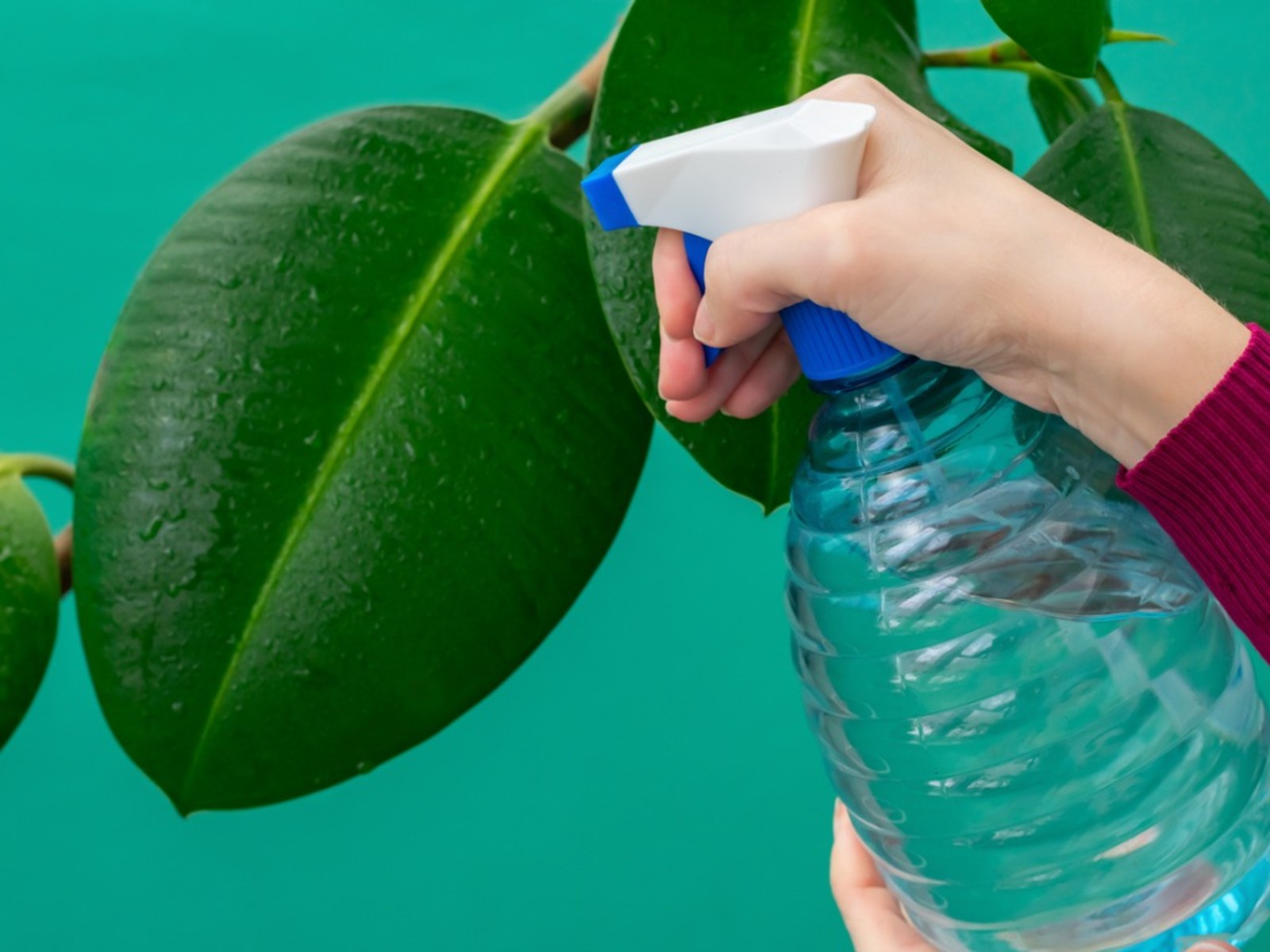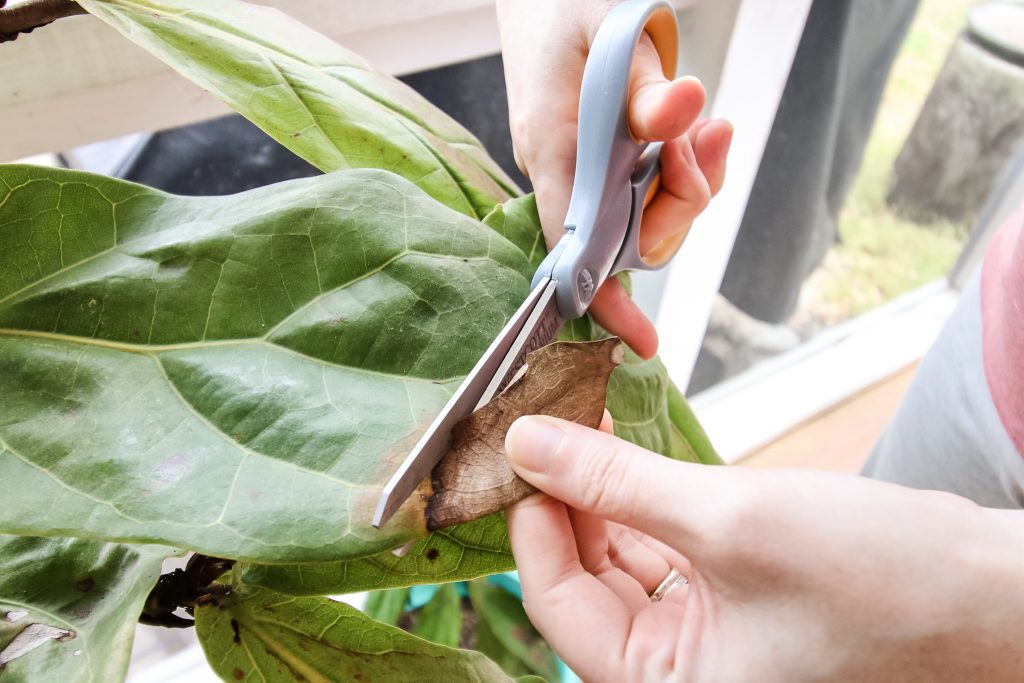Household leaves are an essential part of home décor, but they tend to accumulate dust and dirt. These beautiful leaves are also good for purifying the air. However, to get their full benefits, you must clean them regularly.
Cleaning leaves is not an easy task because they are moist and easily tear when used. It’s important to clean your household leaves from time to time so that you can enjoy the sight of them for longer.
Remove Dust and Grime
Leaves that are covered in dust or grime can cause illnesses like asthma and bronchitis. Wipe them with a damp cloth before placing them in the dishwasher if dishwasher safe. This is the best method to clean large plant leaves that are difficult to move. Make sure you don’t let your leaves wet as this can trap more dust.
Dunk your cloth in water and squeeze out excess liquid, then gently wipe the leaves. Be gentle with your plants; rubbing too hard can damage them. This will remove all the dust and grime. Also, use microfiber cloths and cheesecloths as they’re good in cleaning both indoor and outdoor plants. Occasional cleaning and dusting can help keep your plant leaves stay clean all the time.
Remove Dust from Plants with Fuzzy Leaves
Plants with sticky or fuzzy leaves, such as African violets, are very delicate and damaged with water. Instead of wetting them, use a damp microfiber or terry cloth to wipe down the furry leaves. If you have dust on your violets’ long fuzzy leaves, spray them lightly with plain water, which can help remove dust without damaging the plant.
Also, use a clean, soft paintbrush to gently brush off plant leaves. A soft paintbrush can also be used to remove cobwebs on indoor plants. If you don’t have a soft paintbrush, try to wipe off the dust using a pipe cleaner or a mushroom brush. A soft brush can gently coax the dirt and dust between the hairs without damaging them
Rinse Indoor Plants with Warm Water
Place your indoor plant in a kitchen sink or shower stall. Fill the sink with water up to its rim, or wet the shower floor to submerge the leaves in about an inch of water. Shower mist will also help to hydrate the plant’s leaves.
Allow the plants to drip-dry, then take them outside to get some sunshine. Avoid using cold water as it can leave spots in your plant. Instead, always use warm water. Also, avoid washing plant leaves that are sensitive to water.
Dunk Small Plants into Water
Dunking small houseplants into water will help you get rid of dust quickly. All you have to do is keep them in place by placing your hand over the soil, then dunk them in water for some minutes. This is an excellent option for both houseplants and outdoor plants.
Giving those small plants with leaves, a quick dunk in a bath of tepid water can help them. After swirling the plant around tepid water, flip it back, then allow it to drip dry. If there’s still a lot of water in the leaves, use a paper towel or soft cloth to gently blot and allow it to dry.
Clean Cactus and Succulents Using Compressed Air
Regularly dusting the leaves of houseplants with a thin layer of water-free pesticide can be hard. The solution to this is using compressed air for plants that are easy to see in garden shops or plant stores. When cleaning household leaves, cactus and succulents require a different approach than simple houseplant care.

Image caption: https://tobebright.com/
They have a waxy coating that helps them to survive in arid environments. This protective coating helps them to collect water and save it for dry days. When you want to make them look attractive, use compressed air for plants or spray a soft cloth with water, then gently wipe the dust.
You can also try other household leaves cleaning tools like feather duster or vacuum cleaner hose attachment that sucks up dirt without damaging delicate plant parts. Spraying water on the plant to get rid of dust and grime is not good as it makes the coating soggy and plants die. If you plan to clean a potted plant, remove the pot from the stand before washing it. Do not forget to check if drainage holes are clean as it leads to rotting of roots.
When leaves have yellow color due to salts or fertilizer build-up, spray water with a very low concentration of all-purpose cleaner solution and dry. Cleaning cactus and succulents should be done outside and not inside your home. Be sure to wear gloves while cleaning the plants. Do not spray for too long as the air gets too cold and can damage your plant tissue.
Wash with Water and Soap Solution
If your indoor plants are considerably dirty, they may not only need a dunk but soap spray to make them clean and smell fresh. When your indoor leaves are abnormally dirty, it is best to mix a gentle soap solution before you spray the leaves. Spray a lightweight mixture of soap solution and water on the surface of your indoor leaves, particularly if they’ve been exposed to smoke or pollution.

Image caption: https://www.gardeningknowhow.com/
This will effectively wash away dust, dirt, salts from cigarette smoking, fireplace smoke, or even air pollutants. Create a solution containing one tablespoon of dish soap and one quart of lukewarm water in a bottle. Shake the bottle well to mix completely.
Distribute the soap solution on your indoor plant’s leaves with a sprayer or if you are cleaning large areas of leaves, use a garden pump-up sprayer. Alternatively, use a gentle stream from your faucet. Spray the current foliage clean since it consists of soil particles and other debris.
Let the leaves air dry completely without wiping, brushing, or agitating the foliage to avoid injury. This might take several days. Doing this procedure frequently can cause yellowing of leaves and loss of plant vigor, so clean only when needed. You can also pat with a cloth if it is infrequent cleaning.
Rinse Indoor Plants Off the Shower
If your indoor plants are too large that you can’t dunk them in the kitchen or bathtub, don’t worry. Give them a quick wash in the shower. Move your plant to the bathtub and gently spray them down. This can be done weekly if needed, but make sure to allow the plant to air dry before placing it back in your home or office. If there is salt build-up in your household leaves, this is the best method to clean them.
This method is good for rinsing down plant food or salts built up in your plant’s leaves. This is not good for general cleaning but rather for giving it a quick rinse down so you can continue to take care of your plant without much fuss. Mineral salts are great nutrients for plants, so don’t rid them completely. Just be sure you are providing proper nutrients.
Clean Your Plants with White Vinegar and Water
The best thing to clean leaves in a household with nutrient build-up is white vinegar and water. Mix this in a 1:1 ratio and fill your sink with the solution. Place your plant leaves in the solution and allow them to soak for about 5-10 minutes or longer if needed. Remove from the solution, rinse well with water, and allow to dry.
This solution can also be used on any hard surfaces with grime build-up on them. It is a good idea to wipe down the leaves with this solution, along with the stems, before placing your plants back in the room or area where they are being displayed.
The best thing about vinegar is that it is safe for your plants and won’t harm them in any way. You can find white vinegar at most grocery stores, and it does not cost much money either.
Trim Dead Leaves from Plants
When doing some gardening work or cleaning your plants, you might notice dead leaves and the best signs for this are wilting and discoloration. However, trimming off these leaves doesn’t improve the look of your plant. Instead, it can stop nutrients from reaching your survival leaves. Alternatively, you can get rid of these dying leaves by hand if they are loose. And if they’re not loose; use a pair of scissors for pruning shears.

Image caption: https://www.charlestoncrafted.com/
Then you can gently tug at the leaf until it comes loose from your plant. This is a great way to remove dead leaves from your plants if they’re easy to get out of the ground. Instead of pulling these dying leaves, you should try using a cloth or sponge with some warm water. Gently wipe the leaves to remove dust and dirt, but do not harm your survival leaves.
Rub a Thin Coat of Mayonnaise to Keep Your Leaves Shiny
Squeeze little mayonnaise into your paper towel and wipe it over your leaves. Use a light enough coat to cover your entire leaf without making it feel slippery. Mayonnaise is full of fats and oils that will keep your leaves healthy and shiny by protecting them from the elements.
You can also use olive oil or grape-seed oil to shine and protect your plant’s leaves, but mayo works just as well for a fraction of the price. Use a clean paper towel to remove excess mayo. The shiny coat will last for two weeks, so reapply the mayonnaise to restore your leaf shine. Cover your leaves in thin mineral oil, available at almost every grocery store across the country.
Mineral oil won’t damage your leaves or make them slippery but will protect them from drying out. Rub a small amount of mineral oil onto the leaves with your fingertips for best results.
Leaf shine products like mineral oil and grape seed oil will protect your leaves while giving them a shiny look throughout the time. You can also spray commercial plant leaves shiners on your leaves to create a leaf shine.
Dust Your Leaves with Feather Dusters
The simple way to remove dust and grime from your leaves is by dusting them with a feather duster. And ostrich feathers are the best option as they are soft and gentle on your leaves. Moreover, they won’t cause any damage to your leaves like other options like wire brush or rough cloth.
After dusting with ostrich feathers, you can either use a feather duster or wipe it off using a cotton strip to remove the remaining dust particles.
FAQs on Cleaning Household Leaves
What is the best way to clean indoor plant leaves?
The best way to clean indoor leaves is using a cotton strip dipped in warm water. Wipe it off with the cotton strip, and you are done.
What can I use to clean household leaves?
You can make your eco-friendly cleaner at home that will work wonders on all kinds of surfaces, including household leaves. You need baking soda, water, and some essential oil. Combine the baking soda with water to form a paste and add some drops of essential oil for fragrance. You can also use vinegar instead if you don’t have any essential oil.
Final Thought on How to Clean Household Leaves
As you can see, plants leaves are more than just for show. They have more important functions than acting as home decor or air purifiers. They also aid in plant growth, and leaving them dirty can impede plant growth as well. So, apart from ensuring your plants get proper nutrients and testing soil PH, keep them clean. Consider the above methods to remove dust and dust and also maintain plant health.
The post How To Clean Household Leaves appeared first on Kitchen Infinity.
Did you miss our previous article…
https://chefbuano.com/?p=145